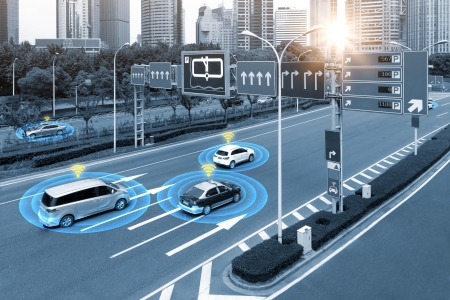Several existing driver assistance systems can be seen as first steps in the development of a completely self-driving vehicle. In answering the question above, we will briefly discuss what these systems entail; for more information, see SWOV fact sheet Intelligent transport and advanced driver assistance systems (ITS and ADAS). IIntelligent transport and driver assistance systems are technology applications in vehicles and infrastructure to make traffic safer, more efficient, comfortable, reliable and eco-friendly.
Some of these systems are intended to support the driving task. Examples are: systems that can send out warnings and/or momentarily intervene; for instance, warning when a vehicle leaves its lane (Lane Departure Warning) or intervening by an emergency brake (Autonomous Emergency Brake). Some driver assistance systems can partly take over the driving task. This concerns technology that can keep a vehicle in its lane (Lane Keeping System) or make sure that the vehicle keeps a safe distance to the vehicle in front (Adaptive Cruise Control). If vehicles are equipped with both these technologies that partly take over the driving task, they are called Level 2 self-driving vehicles (see the question Which levels of driving automation can be distinguished?). The technologies need to be further developed and supplemented to create a fully self-driving vehicle.
